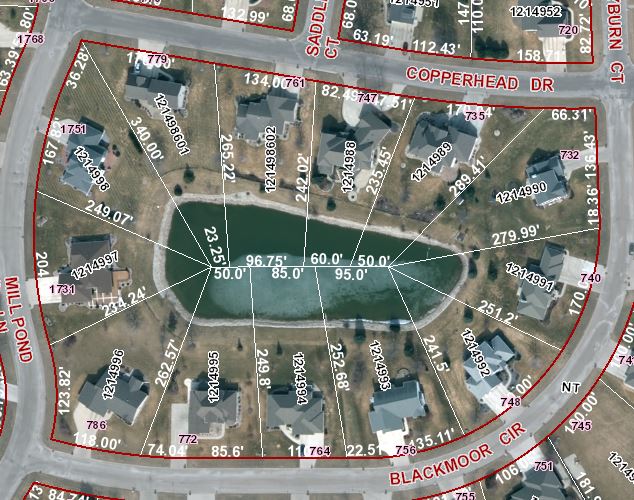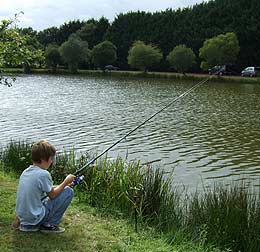By-Laws
There is one annual meeting in late Fall scheduled/hosted by the Board of Directors where all property owners are required to participate and vote on budget items, elect Board members, consider changes to the By-Laws and Protective Covenants. The meeting will be posted here, “Events“, when the schedule if finalized.
If a property owner is not able to attend, they can designate another owner who is attending to be their proxy. The proxy form can be found in the “forms and documents library“.
Additionally, special meetings can be called as needed with property owners being given proper advance notice so they can make arrangements to attend.
Covenants
All homeowners should have received a copy of the covenants and by-laws when they completed the purchase of the property/home as part of the closing transaction. A current copy of the covenants can be found on this website here: Protective Covenants Of Golf Village
Leave a Reply
Yes. Approval is required for new building additions, fences, permanent pools, sheds, etc. Contact the Property Owners Corporation officers for plan approvals. Per the covenants, “No new buildings of any type may be constructed on the property without approval of the Architectural Committee” [i.e. Board of Directors).
Leave a Reply
Pond
Purpose:
The main water retention pond is used to manage the water runoff for the entire community of 56 lots. The water entering the drains along the streets as well as the sump pumps for all of the Golf Village Community homes is discharged into the pond. There is a second smaller dry pond near the corner of Copperhead Drive and West American Drive (east of lot 22) that serves as an overflow basin for the main pond.
Ownership:

All of the properties surrounding the main pond are physically part of the pond – the homeowners of those lots each own part of the pond (i.e. their lot lines extend into the center of the pond). Essentially, the pond is considered private property and not accessible to the general public.
The overflow (dry) pond is owned by the Golf Village Property Owners Association.
Maintenance/Responsibility of the Pond:
The home owners association is responsible for maintaining the Golf Village ponds. This is funded through the annual dues and includes ensuring that the water level is maintained at a proper level, algae growth is treated/controlled and actions are taken to minimize the amount of contaminates (i.e. grass clippings, fertilizer runoff) entering the ponds.
The main pond has a pump house (lot 48) for a well that is used to add water to the pond to maintain a proper level. During non-freezing months, the pump house also powers three aerators to keep the water in the pond circulating, to reduce algae growth and supplement/minimize the chemical treatments needed to control the algae.
Leave a Reply

No one knows for sure how they got there, but the pond does have some small pan fish living in it. Since the homeowners surrounding the pond own a part of the pond, anyone who does not own property on the pond must get permission from one of the homeowners to gain access to the pond and fish from their property.
Leave a Reply
State & Local Government

The Quick answer is that the DOT could not justify noise abatement based on their studies and modeling of traffic volume. Baring any new highway projects in this area, the models indicated that they conduct another study no earlier than 2038.
Since the announcement of the highway 10/441 Interchange project in 2012, various Association Members including the Board have attended community meetings and spoken directly to WI DOT engineers/project leads to have them explain what their plans were to provide sound abatement along the highway segments facing the Golf Village Residential Community.
For additional understanding of the issues and WI DOT’s position on the topic, a summarization of those conversations and studies are included below.
2013 WIDOT Sound Study
Background
The following response was emailed to an Association member following their inquiry about possible sound abatement for residents of the community that have homes facing US highway 41 and the 441 interchange in 2014.
“Noise is defined as unwanted sound. The level at which sound becomes unwanted is differs greatly from person to person. For that reason, the Federal Highway Administration (FHWA) tried to determine a reasonable level at which a noise impact occurs. As I understand, FHWA asked a study group what they thought was a reasonable sound level. As you might expect, that level was quite low. Then FHWA looked at sound (levels and durations) that could cause hearing damage based on OSHA standards. Those levels were quite high. So FHWA had to find a compromise somewhere between.
The compromise was to look at activity interference. It was determined that two people, standing about 2 feet apart and talking at normal conversational levels will have to start talking louder when another 66 – 67 dB source is present. So FHWA decided that when highway sound levels approach or exceed 67 dBA for residential properties, a noise impact occurs. FHWA then let the individual State Highway Agencies decide what they wanted to set as noise impact criteria for different land uses (provided it was reasonably close to the FHWA guidance criteria). WisDOT decided to use the FHWA criteria rather than trying to justify other numbers for different land uses. WisDOT also concluded that “approach” is defined as 1 dB less than the Noise Level Criteria for a specific land use. Therefore, it is WisDOT policy that a noise impact occurs at 66 dBA for residential properties.
Response by Jay Waldschmidt, P.E., NEPA Team Lead – WI DOT
The files included below were provided in support of WIDOT findings for the WIS 441/US 10 project. They indicated that there would be no need to consider abatement and that their model indicated the next review would be in 2038.
Findings
10_441-noise-Analysis-Exhibit-1310102020 Sound Abatement Follow-Up With WI DOT
The Board contacted the WI DOT to follow-up and understand if there were any changes in plans for noise abatement for our Community. The following was the response (no change planned) that included additional materials provided regarding noise levels and barrier facts.
Background
Basics-of-Acoustics-WI-DOT-Presentation WI-DOT-trafficnoiseweather WI-DOT-Generic-Noise-Barrier-BrochureThe existing sound level measurements were conducted on June 11, 2013 at sixteen locations along the proposed project. See points labeled as “FS” on the displays. FS 4 and 5 in the location of the Golf Village subdivision had existing sound levels of 49.8 and 51.2 decibels, respectively.
The noise analysis’s predicted future sound levels are developed using modeling software. It incorporates the new highway design as well as future predicted traffic volumes. The projection is made out to the design year, which is 2038. The predicted future sound levels for the 2038 design year for FS 4 and 5 are 60 and 61 decibels, respectively.
No new analysis is preformed unless there is a qualifying project (see list in original email). WisDOT does not have a funded program for standalone noise analyses or noise barrier construction projects.
The noise barrier adjacent to the Westfield Estates subdivision in the SW quadrant of the interchange was constructed as a result of the original US 10 highway construction. The reasoning for the barrier being eligible for construction in that location may have been a difference in age of the subdivisions at that time or just that the NW quadrant of the interchange was not considered impacted during that project’s noise analysis (criteria described in my first email). There appears to be more of a buffer (open space, American Dr, some commercial properties) between the Golf Village subdivision and the highway verses the Westfield Estates subdivision and the highway. Doubling the distance between a line source of sound and the receptor decreases the sound level by about 3 – 4.5 dB. That, among other factors, such as traffic volume and speed which contribute to traffic noise, may explain the differences between the 2 locations.
Response by Jen Gibson, Environmental Analysis and Review Specialist – WI DOT
Leave a Reply